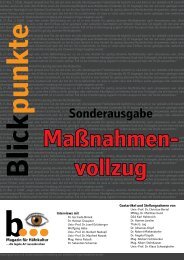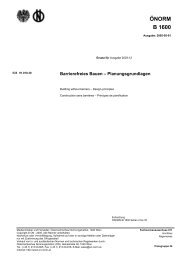- Page 1 and 2:
Oslo 8-11 August 2013DefendingDemoc
- Page 3:
Defending Democracy
- Page 6 and 7:
Defending DemocracyNordic and Globa
- Page 8 and 9: 155Henrik G. BastiansenNorwegian Me
- Page 10 and 11: Nordicom Review 35 (2014) Special I
- Page 12 and 13: Nordicom Review 35 (2014) Special I
- Page 14 and 15: Nordicom Review 35 (2014) Special I
- Page 16 and 17: Nordicom Review 35 (2014) Special I
- Page 18 and 19: Nordicom Review 35 (2014) Special I
- Page 21 and 22: Nordicom Review 35 (2014) Special I
- Page 23 and 24: Nordicom Review 35 (2014) Special I
- Page 25: Kirsten Frandsenhas continuously be
- Page 28 and 29: Nordicom Review 35 (2014) Special I
- Page 30 and 31: Nordicom Review 35 (2014) Special I
- Page 33 and 34: Nordicom Review 35 (2014) Special I
- Page 35 and 36: Natalie Fenton Defending Whose Demo
- Page 37 and 38: Natalie Fenton Defending Whose Demo
- Page 39 and 40: Natalie Fenton Defending Whose Demo
- Page 41 and 42: Natalie Fenton Defending Whose Demo
- Page 43 and 44: Natalie Fenton Defending Whose Demo
- Page 45: Natalie Fenton Defending Whose Demo
- Page 48 and 49: Nordicom Review 35 (2014) Special I
- Page 50 and 51: Nordicom Review 35 (2014) Special I
- Page 52 and 53: Nordicom Review 35 (2014) Special I
- Page 54 and 55: Nordicom Review 35 (2014) Special I
- Page 56 and 57: Nordicom Review 35 (2014) Special I
- Page 60 and 61: Nordicom Review 35 (2014) Special I
- Page 62 and 63: Nordicom Review 35 (2014) Special I
- Page 64 and 65: Nordicom Review 35 (2014) Special I
- Page 67: Perspectives on Journalism
- Page 70 and 71: Nordicom Review 35 (2014) Special I
- Page 72 and 73: Nordicom Review 35 (2014) Special I
- Page 74 and 75: Nordicom Review 35 (2014) Special I
- Page 76 and 77: Nordicom Review 35 (2014) Special I
- Page 78 and 79: Nordicom Review 35 (2014) Special I
- Page 80 and 81: Nordicom Review 35 (2014) Special I
- Page 83 and 84: Nordicom Review 35 (2014) Special I
- Page 85 and 86: Gitte Gravengaard & Lene Rimestad S
- Page 87 and 88: Gitte Gravengaard & Lene Rimestad S
- Page 89 and 90: Gitte Gravengaard & Lene Rimestad S
- Page 91 and 92: Gitte Gravengaard & Lene Rimestad S
- Page 93 and 94: Gitte Gravengaard & Lene Rimestad S
- Page 95 and 96: Gitte Gravengaard & Lene Rimestad S
- Page 97: Gitte Gravengaard & Lene Rimestad S
- Page 100 and 101: Nordicom Review 35 (2014) Special I
- Page 102 and 103: Nordicom Review 35 (2014) Special I
- Page 104 and 105: Nordicom Review 35 (2014) Special I
- Page 106 and 107: Nordicom Review 35 (2014) Special I
- Page 108 and 109:
Nordicom Review 35 (2014) Special I
- Page 110 and 111:
Nordicom Review 35 (2014) Special I
- Page 113 and 114:
Nordicom Review 35 (2014) Special I
- Page 115 and 116:
Marko Ampuja, Juha Koivisto & Esa V
- Page 117 and 118:
Marko Ampuja, Juha Koivisto & Esa V
- Page 119 and 120:
Marko Ampuja, Juha Koivisto & Esa V
- Page 121 and 122:
Marko Ampuja, Juha Koivisto & Esa V
- Page 123 and 124:
Marko Ampuja, Juha Koivisto & Esa V
- Page 125:
Marko Ampuja, Juha Koivisto & Esa V
- Page 128 and 129:
Nordicom Review 35 (2014) Special I
- Page 130 and 131:
Nordicom Review 35 (2014) Special I
- Page 132 and 133:
Nordicom Review 35 (2014) Special I
- Page 134 and 135:
Nordicom Review 35 (2014) Special I
- Page 136 and 137:
Nordicom Review 35 (2014) Special I
- Page 138 and 139:
Nordicom Review 35 (2014) Special I
- Page 140 and 141:
Nordicom Review 35 (2014) Special I
- Page 143 and 144:
Nordicom Review 35 (2014) Special I
- Page 145 and 146:
Göran Palm & Håkan Sandström Mig
- Page 147 and 148:
Göran Palm & Håkan Sandström Mig
- Page 149 and 150:
Göran Palm & Håkan Sandström Mig
- Page 151 and 152:
Göran Palm & Håkan Sandström Mig
- Page 153 and 154:
Göran Palm & Håkan Sandström Mig
- Page 155:
Göran Palm & Håkan Sandström Mig
- Page 158 and 159:
Nordicom Review 35 (2014) Special I
- Page 160 and 161:
Nordicom Review 35 (2014) Special I
- Page 162 and 163:
Nordicom Review 35 (2014) Special I
- Page 164 and 165:
Nordicom Review 35 (2014) Special I
- Page 166 and 167:
Nordicom Review 35 (2014) Special I
- Page 168 and 169:
Nordicom Review 35 (2014) Special I
- Page 170 and 171:
Nordicom Review 35 (2014) Special I
- Page 173 and 174:
Nordicom Review 35 (2014) Special I
- Page 175 and 176:
Anne Jerslev Celebrification, Authe
- Page 177 and 178:
Anne Jerslev Celebrification, Authe
- Page 179 and 180:
Anne Jerslev Celebrification, Authe
- Page 181 and 182:
Anne Jerslev Celebrification, Authe
- Page 183 and 184:
Anne Jerslev Celebrification, Authe
- Page 185 and 186:
Anne Jerslev Celebrification, Authe
- Page 187 and 188:
Anne Jerslev Celebrification, Authe
- Page 189:
Cooperation, Experiences and Memory
- Page 192 and 193:
Nordicom Review 35 (2014) Special I
- Page 194 and 195:
Nordicom Review 35 (2014) Special I
- Page 196 and 197:
Nordicom Review 35 (2014) Special I
- Page 198 and 199:
Nordicom Review 35 (2014) Special I
- Page 200 and 201:
Nordicom Review 35 (2014) Special I
- Page 202 and 203:
Nordicom Review 35 (2014) Special I
- Page 204 and 205:
Nordicom Review 35 (2014) Special I
- Page 207 and 208:
Nordicom Review 35 (2014) Special I
- Page 209 and 210:
Amanda Lagerkvist A Quest for Commu
- Page 211 and 212:
Amanda Lagerkvist A Quest for Commu
- Page 213 and 214:
Televisual Commemoration and Annive
- Page 215 and 216:
Amanda Lagerkvist A Quest for Commu
- Page 217 and 218:
Amanda Lagerkvist A Quest for Commu
- Page 219 and 220:
Amanda Lagerkvist A Quest for Commu
- Page 221 and 222:
Nordicom Review 35 (2014) Special I
- Page 223 and 224:
Rikke Toft Nørgård Talking Tacitl
- Page 225 and 226:
Rikke Toft Nørgård Talking Tacitl
- Page 227 and 228:
Rikke Toft Nørgård Talking Tacitl
- Page 229 and 230:
Rikke Toft Nørgård Talking Tacitl
- Page 231 and 232:
Rikke Toft Nørgård Talking Tacitl
- Page 233 and 234:
Rikke Toft Nørgård Talking Tacitl
- Page 235 and 236:
Rikke Toft Nørgård Talking Tacitl
- Page 237:
Rikke Toft Nørgård Talking Tacitl
- Page 240 and 241:
Nordicom Review 35 (2014) Special I
- Page 242 and 243:
Nordicom Review 35 (2014) Special I
- Page 244 and 245:
Nordicom Review 35 (2014) Special I
- Page 246 and 247:
Nordicom Review 35 (2014) Special I
- Page 248 and 249:
Nordicom Review 35 (2014) Special I
- Page 250 and 251:
Nordicom Review 35 (2014) Special I
- Page 253 and 254:
Nordicom Review 35 (2014) Special I
- Page 255 and 256:
Svein Høier Surrounded by Ear Cand
- Page 257 and 258:
Svein Høier Surrounded by Ear Cand
- Page 259 and 260:
Svein Høier Surrounded by Ear Cand
- Page 261 and 262:
Svein Høier Surrounded by Ear Cand
- Page 263 and 264:
Svein Høier Surrounded by Ear Cand
- Page 265:
Epilogue
- Page 268 and 269:
Nordicom Review 35 (2014) Special I
- Page 270 and 271:
Nordicom Review 35 (2014) Special I
- Page 272 and 273:
Nordicom Review 35 (2014) Special I
- Page 275 and 276:
Nordicom Review 35 (2014) Special I
- Page 277 and 278:
Nordicom Review 35 (2014) Special I
- Page 279 and 280:
Nordicom Review 35 (2014) Special I
- Page 281 and 282:
Division PapersKvalheim, Nina: Evol
- Page 283 and 284:
Division PapersJerslev, Anne: Celeb
- Page 285 and 286:
Division PapersMattus, Maria: The a
- Page 287 and 288:
Division PapersGilje, Øystein; Gro
- Page 289 and 290:
Division PapersEronen, Maria: Anarc
- Page 291:
Division Papersof Bergen, Departmen
- Page 294 and 295:
Nordicom Review 35 (2014) Special I
- Page 296 and 297:
Nordicom Review 35 (2014) Special I
- Page 298 and 299:
Nordicom Review 35 (2014) Special I
- Page 300 and 301:
Nordicom Review 35 (2014) Special I
- Page 302 and 303:
Nordicom Review 35 (2014) Special I
- Page 304:
The 2013 NordMedia conference in Os





